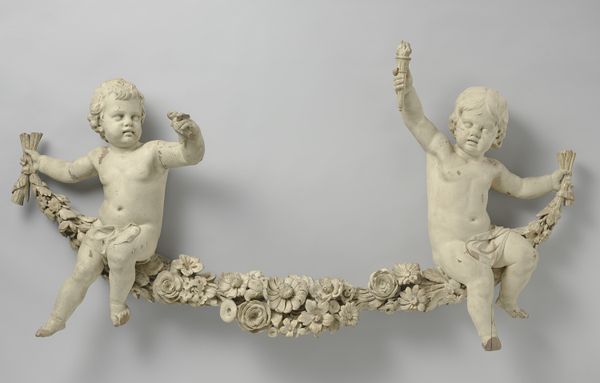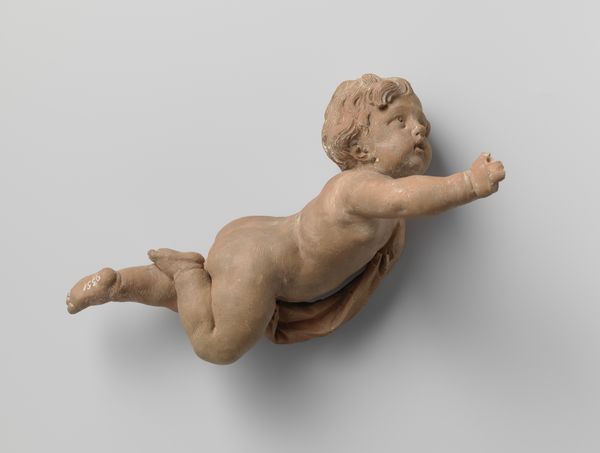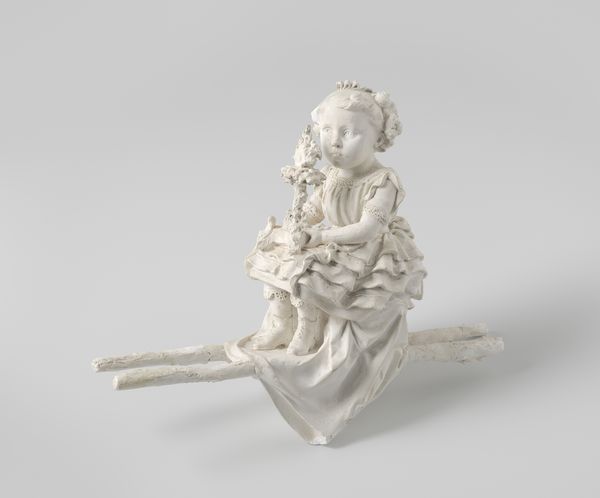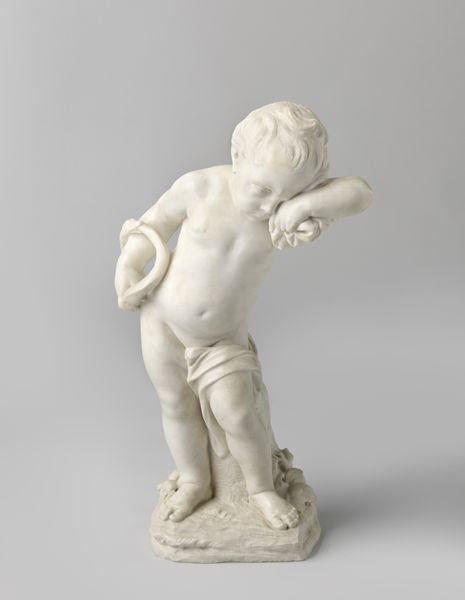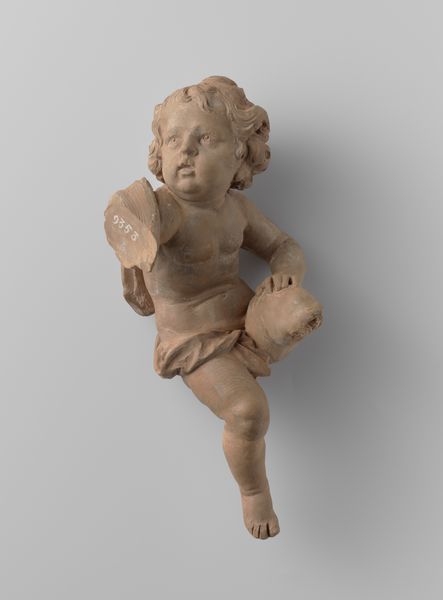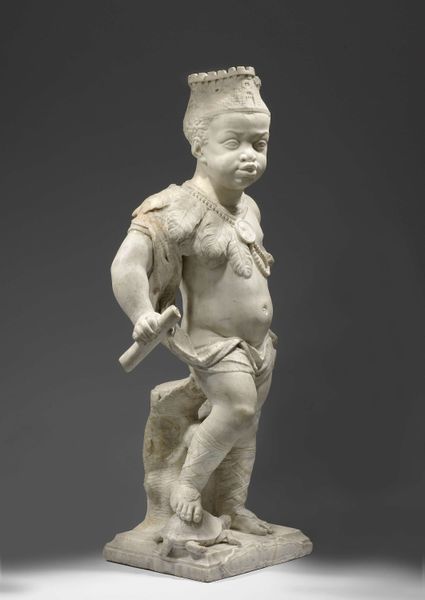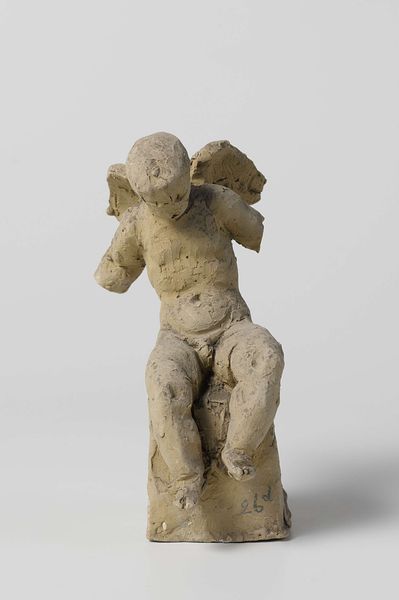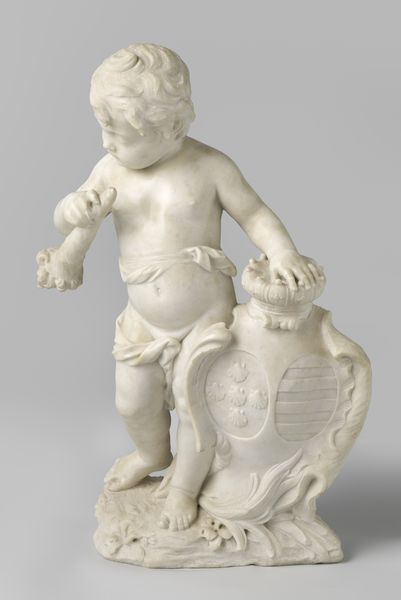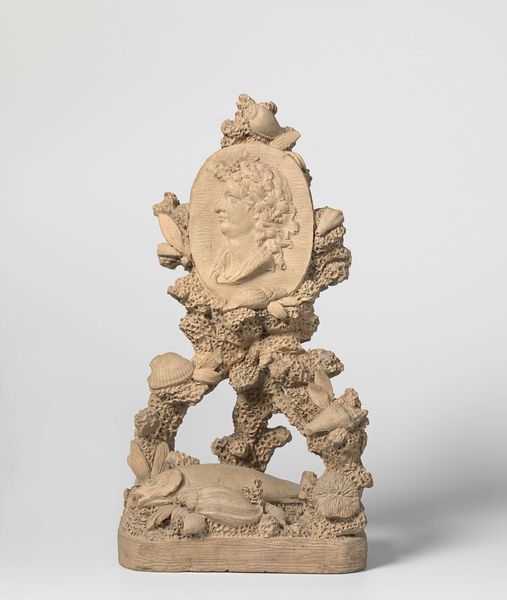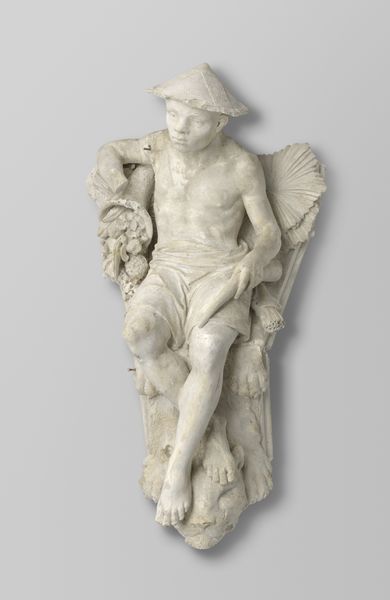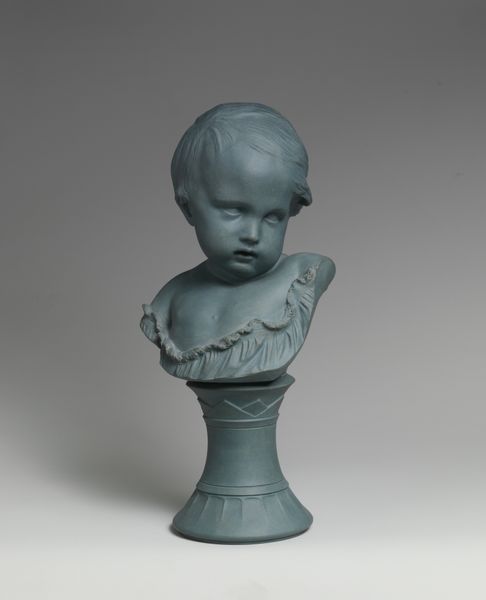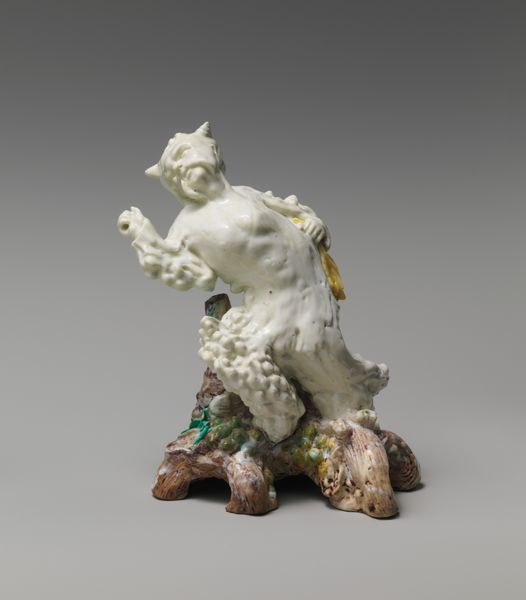
carving, sculpture, plaster
#
carving
#
allegory
#
baroque
#
structure
#
sculpture
#
figuration
#
sculpture
#
plaster
Dimensions: length 58 cm, depth 14 cm
Copyright: Rijks Museum: Open Domain
Editor: This plaster carving, *Fragment van guirlande*, made around 1730 by Michiel Emanuel Shee, features a cherubic figure playfully perched atop an ornate floral garland. It has a light, almost ethereal quality. How do we understand this piece beyond its aesthetic appeal? Curator: Given the period, it’s impossible to divorce it from the baroque era's complex relationship with power and representation. The cherub, a common motif, often served as an allegory for divine love or, more subtly, earthly power disguised as virtue. Consider, who was commissioning these works? Were they purely decorative or subtly reinforcing social hierarchies? Editor: That’s a fascinating point. So the seemingly innocent cherub isn’t necessarily just that? Is it a representation of privileged childhood? Curator: Precisely. Think about the labor involved in producing such a detailed piece. The plaster itself, the carving, the installation – all dependent on a system that inevitably benefits some at the expense of others. These beautiful objects often mask less palatable realities. How might a contemporary audience interpret the cherub’s perceived innocence in contrast with the realities of 18th-century social inequality? Editor: So we're not just appreciating the craftsmanship but also questioning the historical and social context that enabled its creation. That really shifts my understanding of the piece. Curator: Exactly! It encourages us to critically engage with the art object beyond its surface. To ask: Whose stories are being told, and whose are being silenced? It’s this interrogation that makes art history relevant to today's discussions on equity and representation. Editor: That contextualization gives the sculpture a whole new dimension of meaning. It's no longer just a charming decoration; it's a loaded artifact of its time. Curator: And in questioning these power dynamics embedded within the art object, we also empower ourselves.
Comments
No comments
Be the first to comment and join the conversation on the ultimate creative platform.
